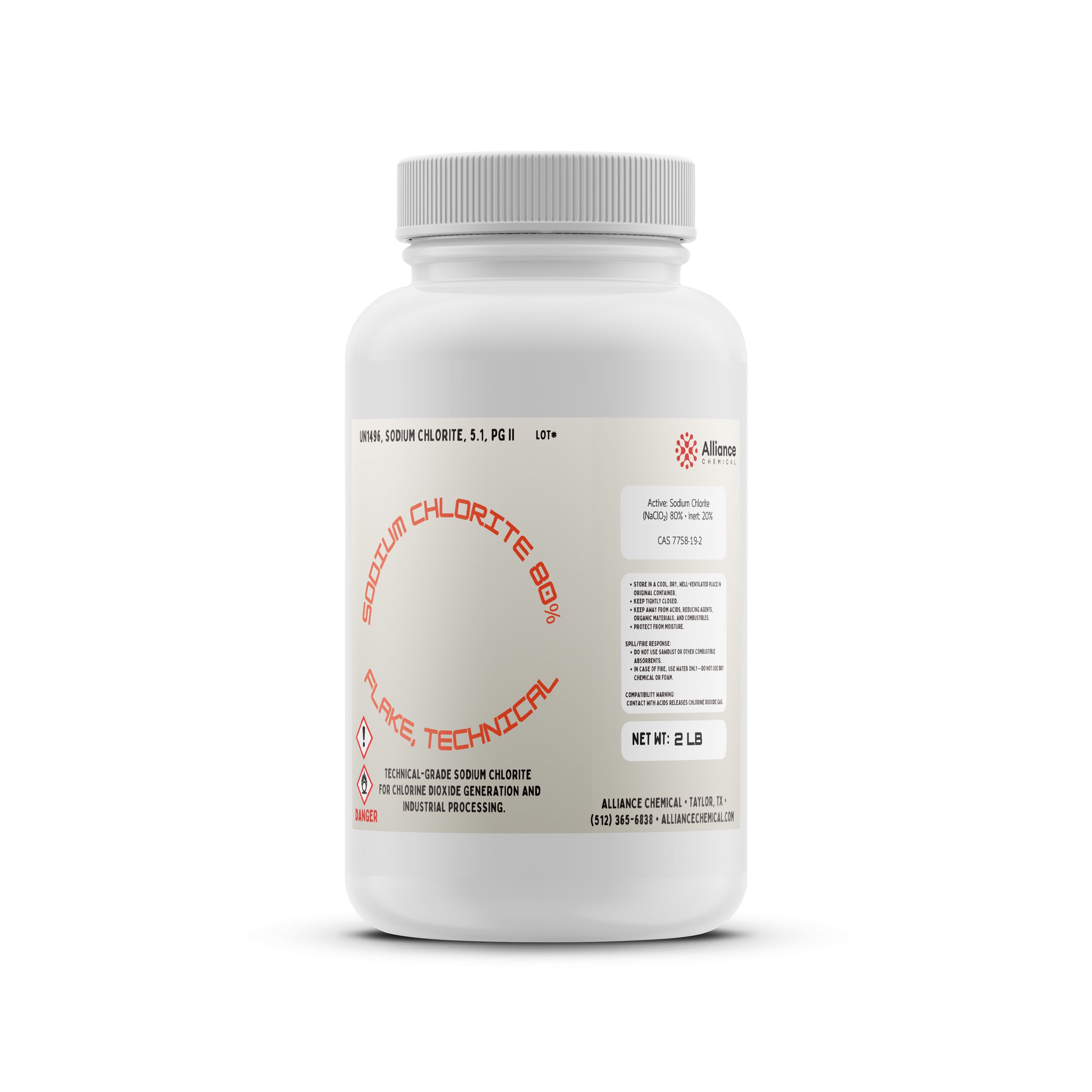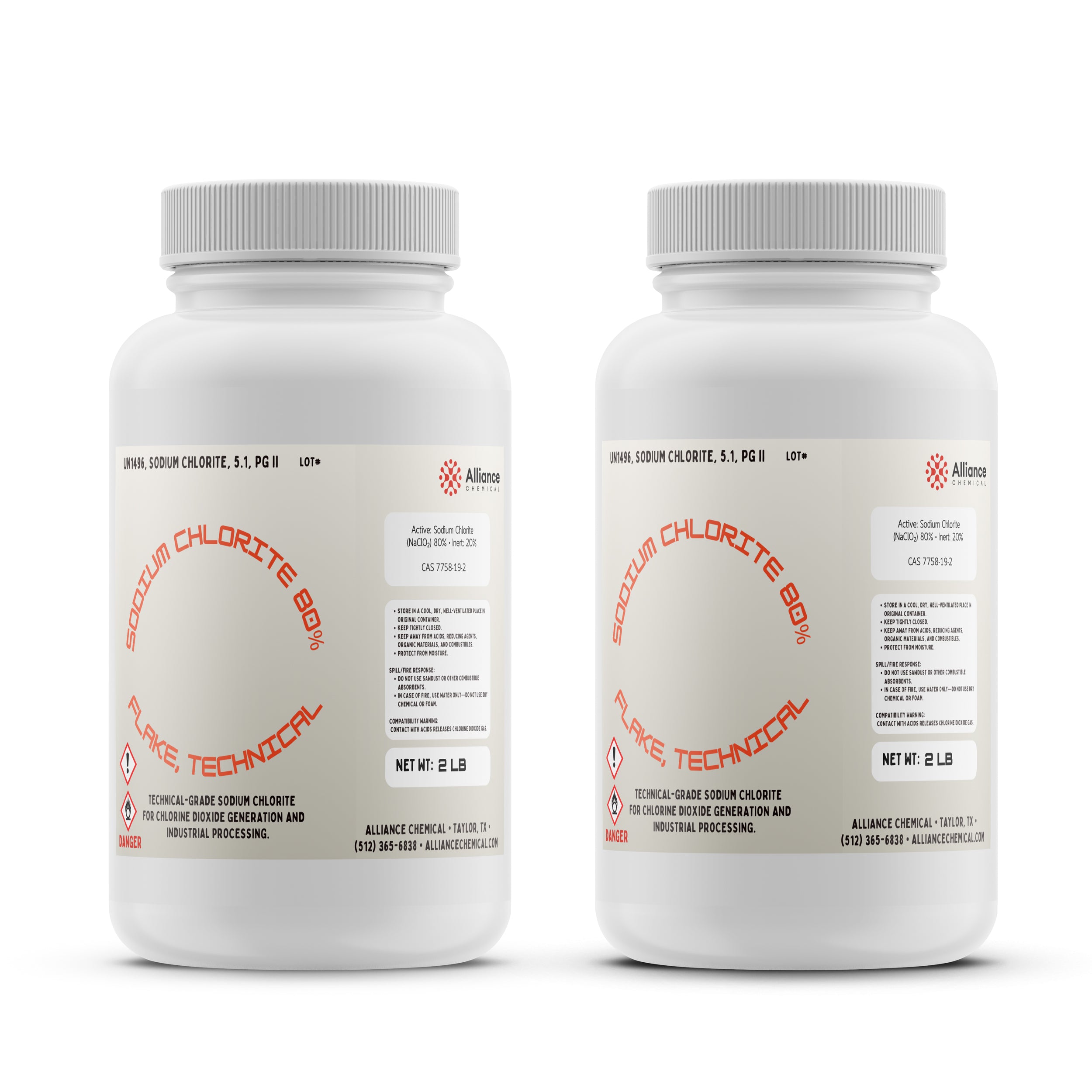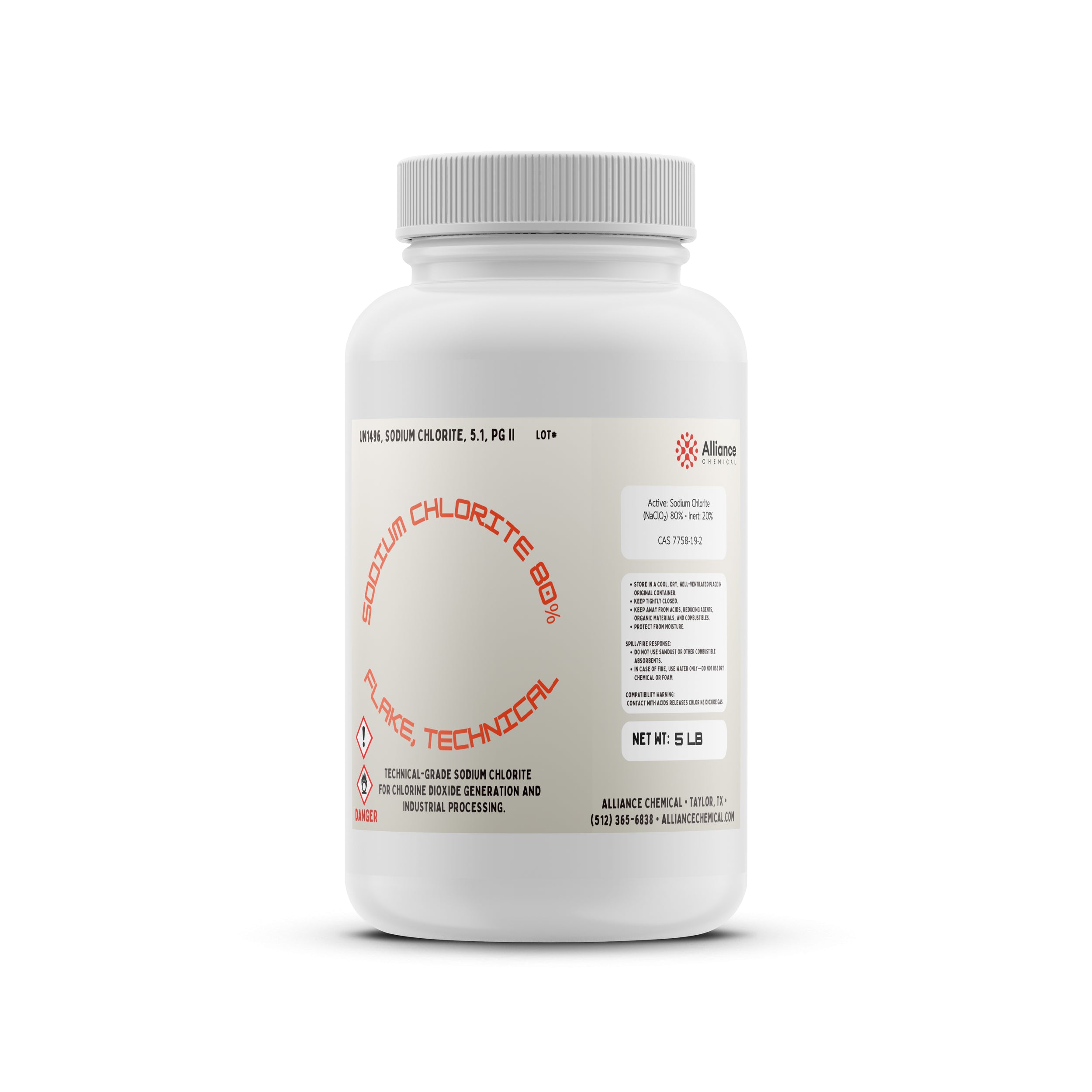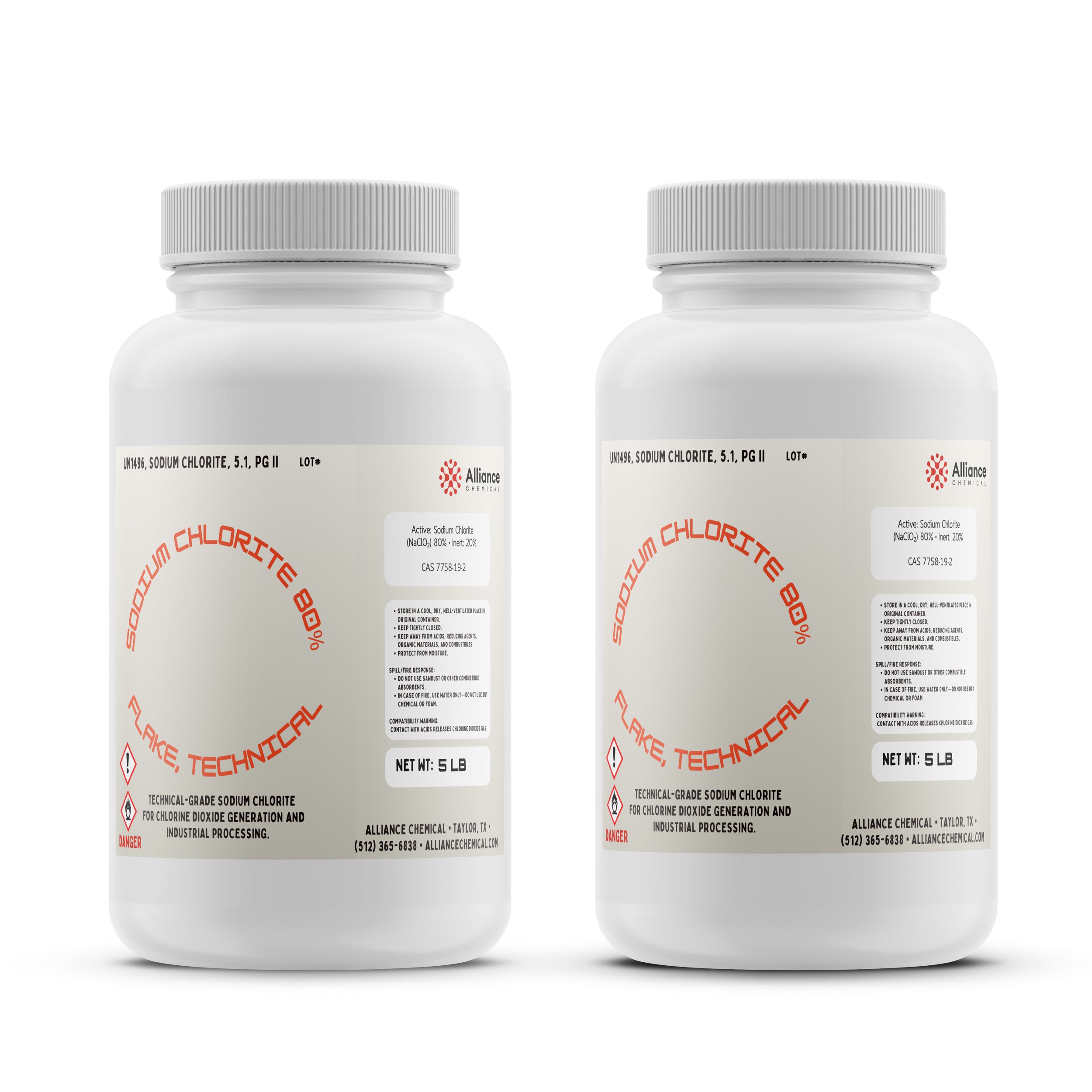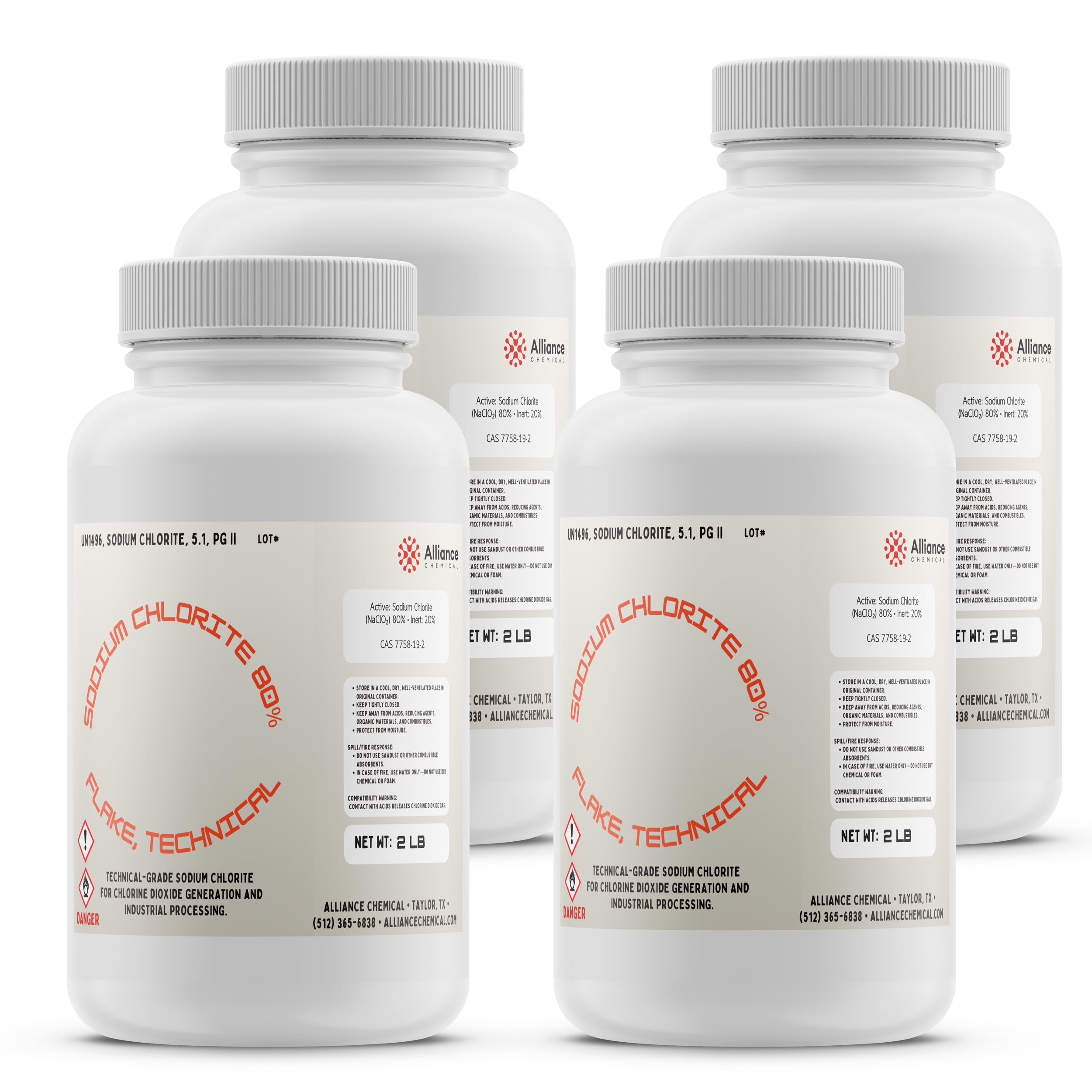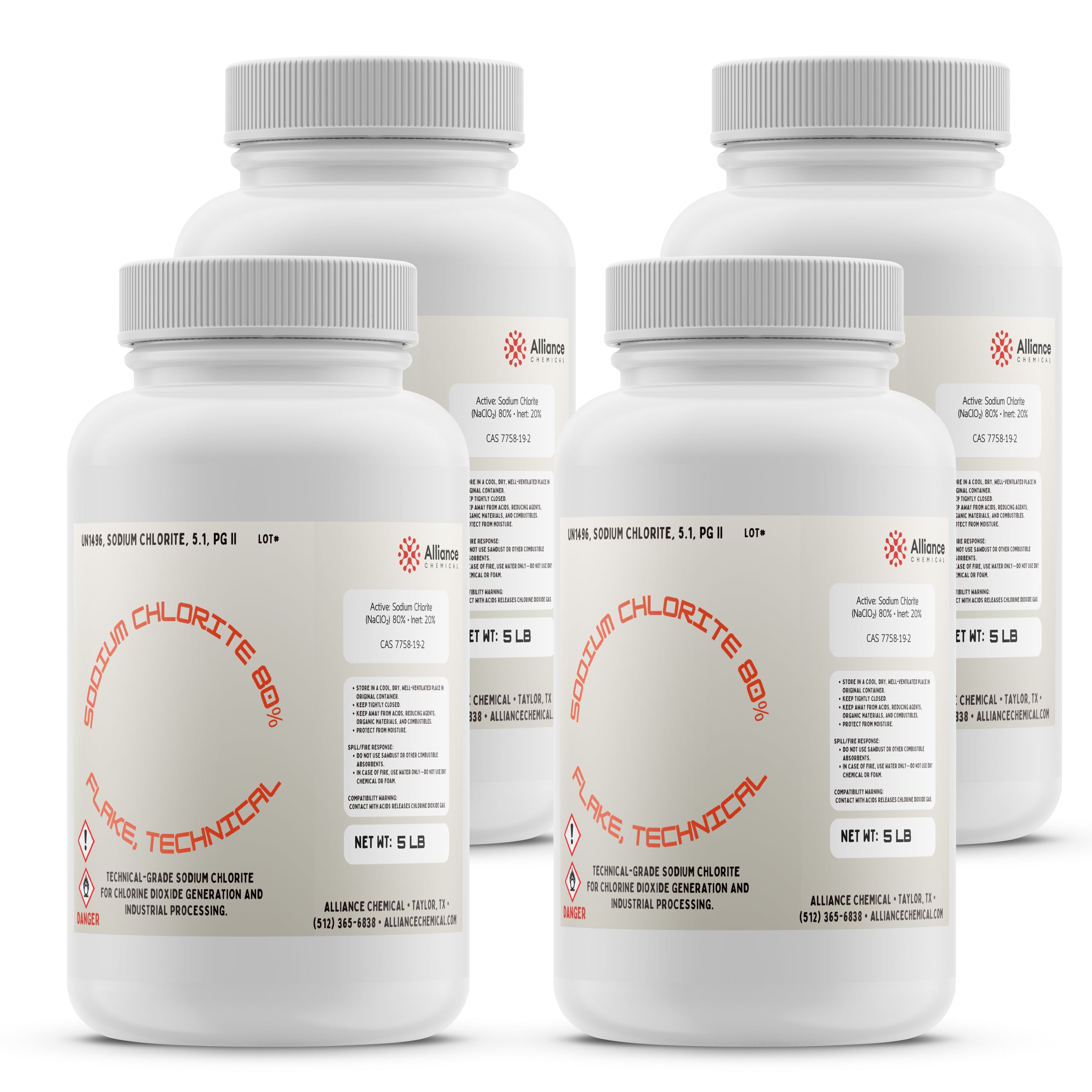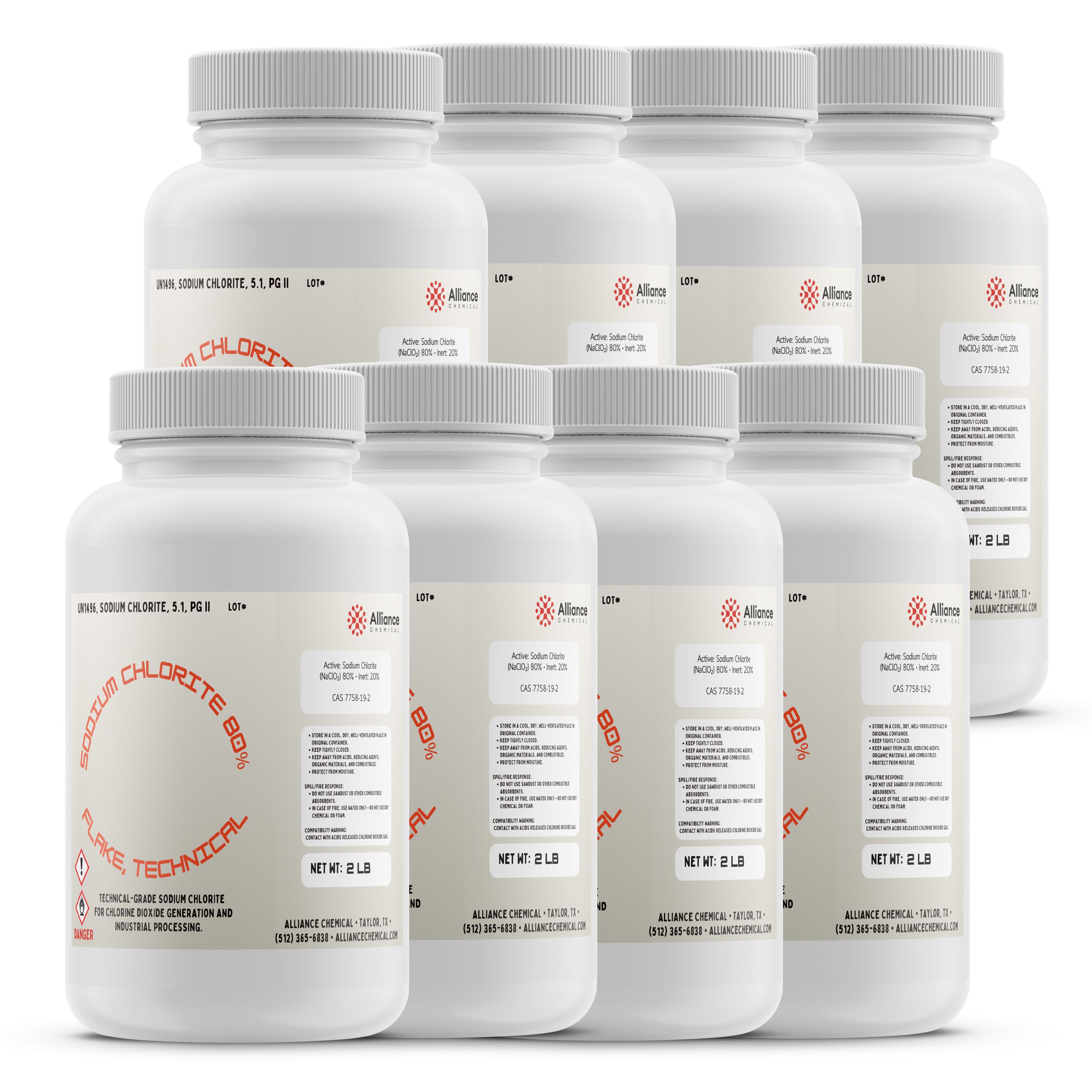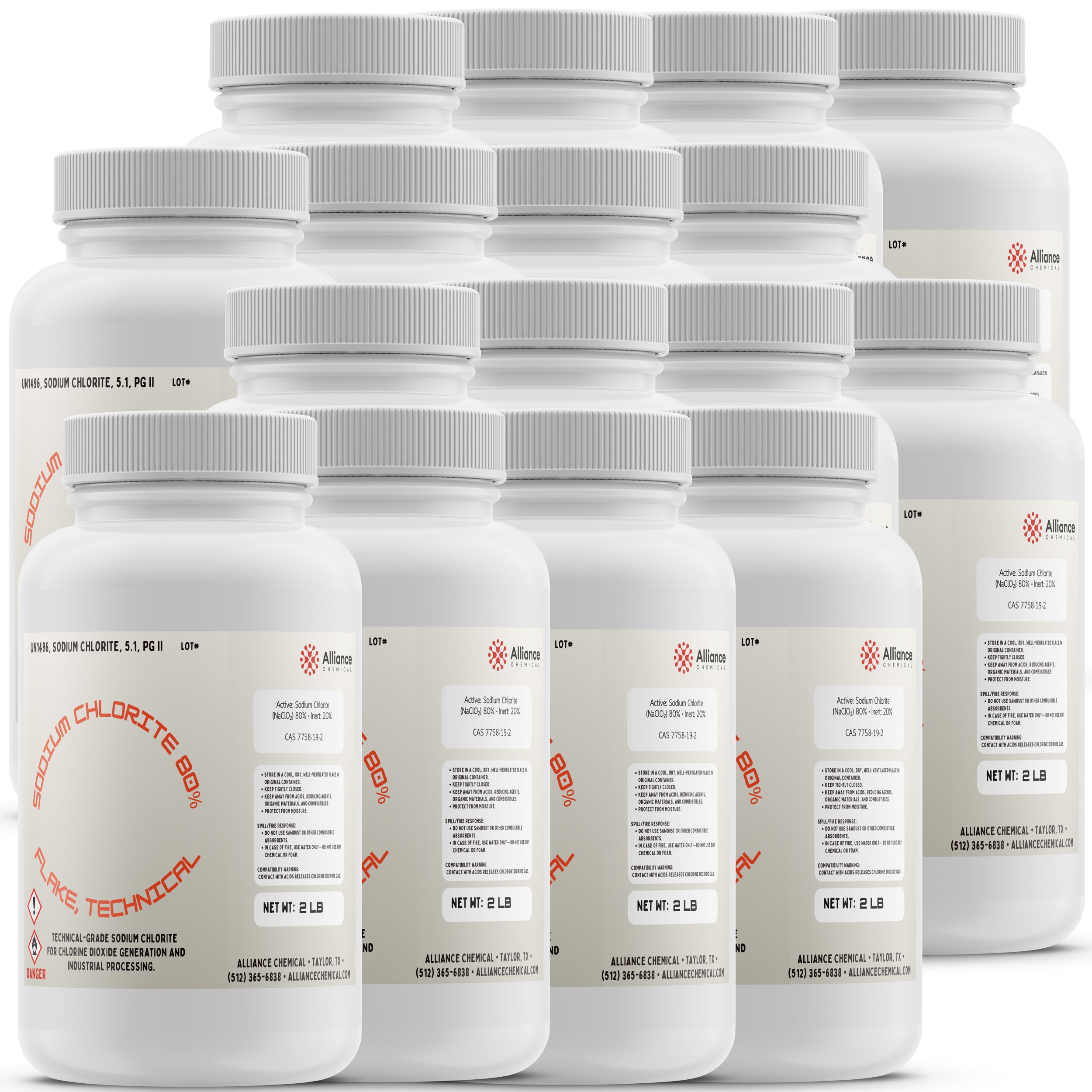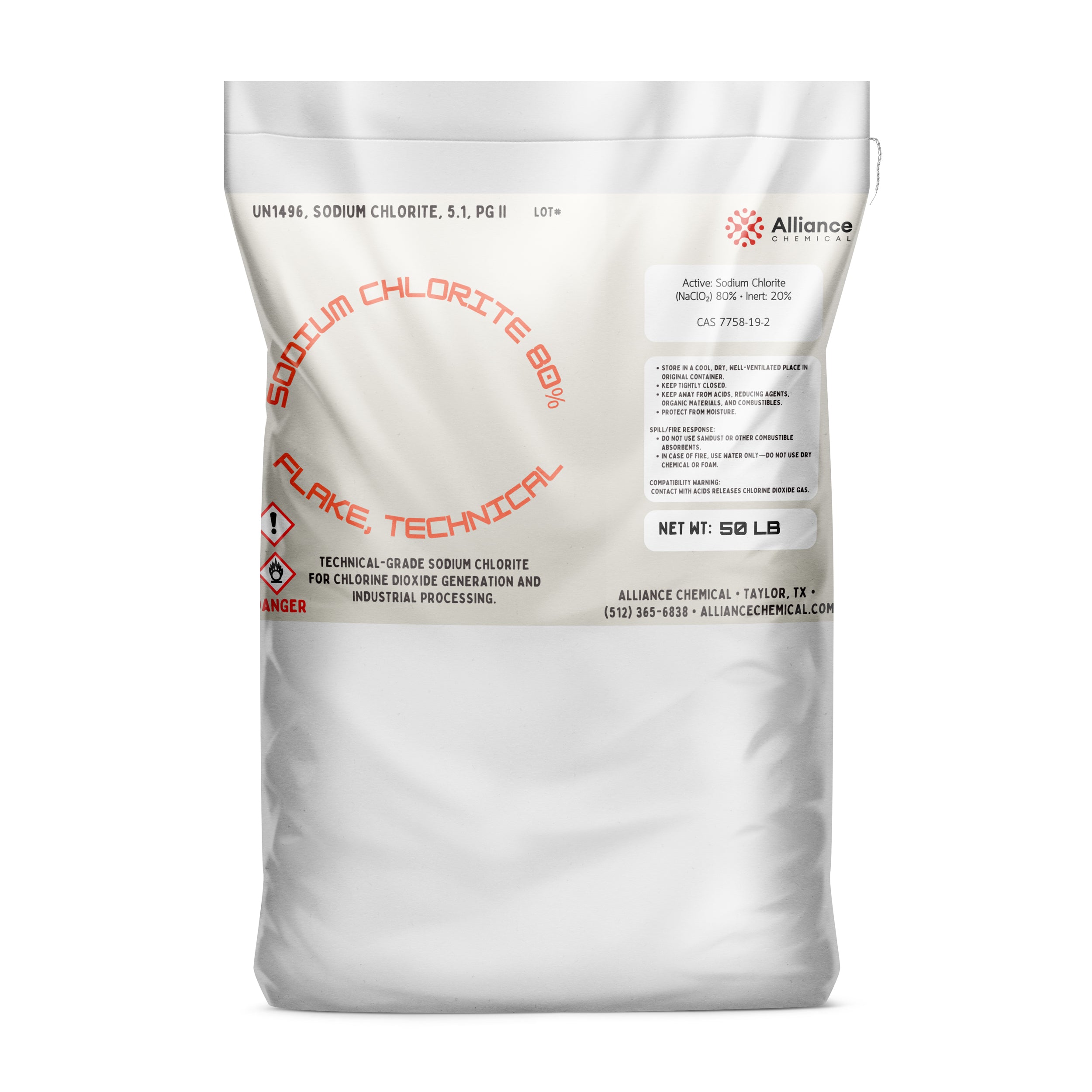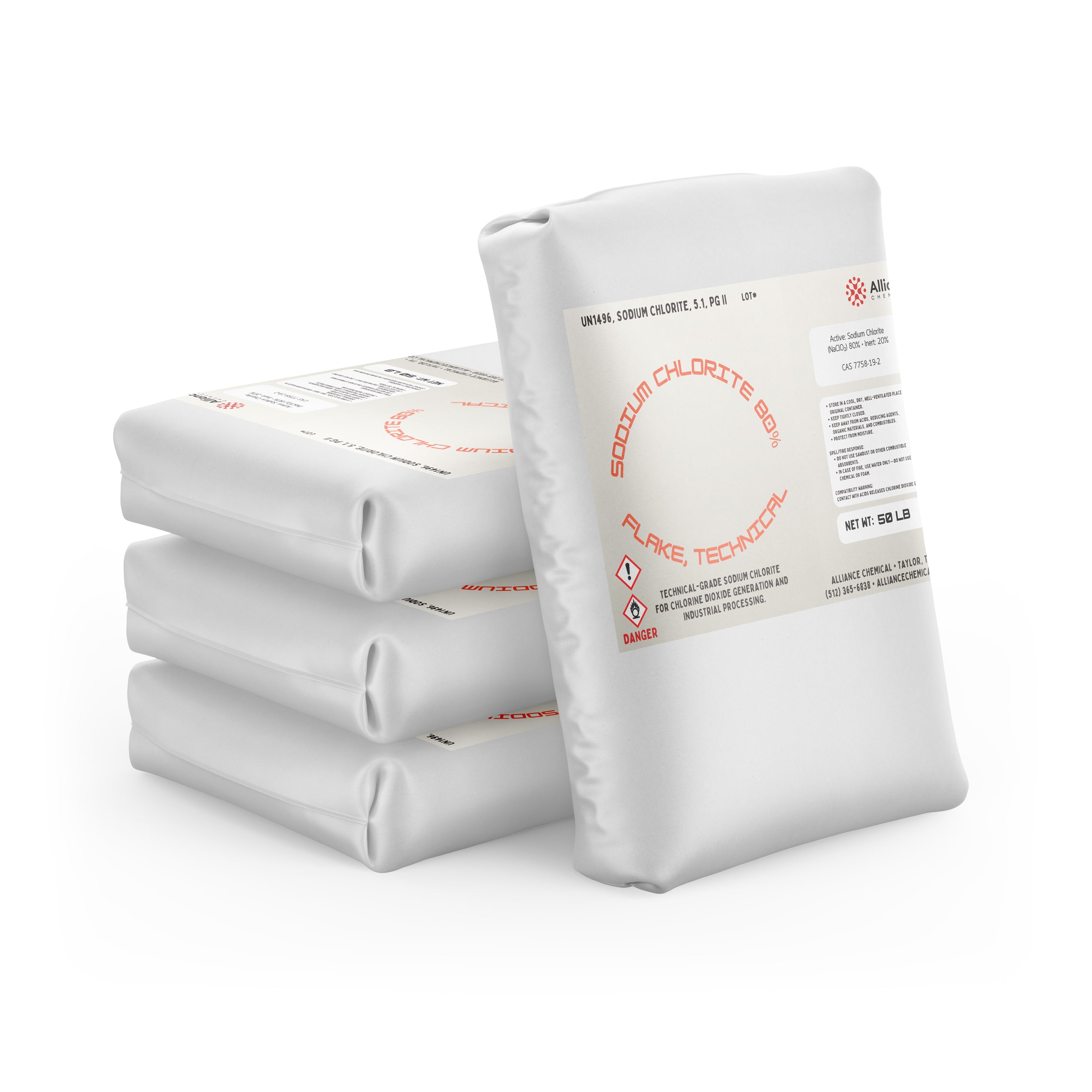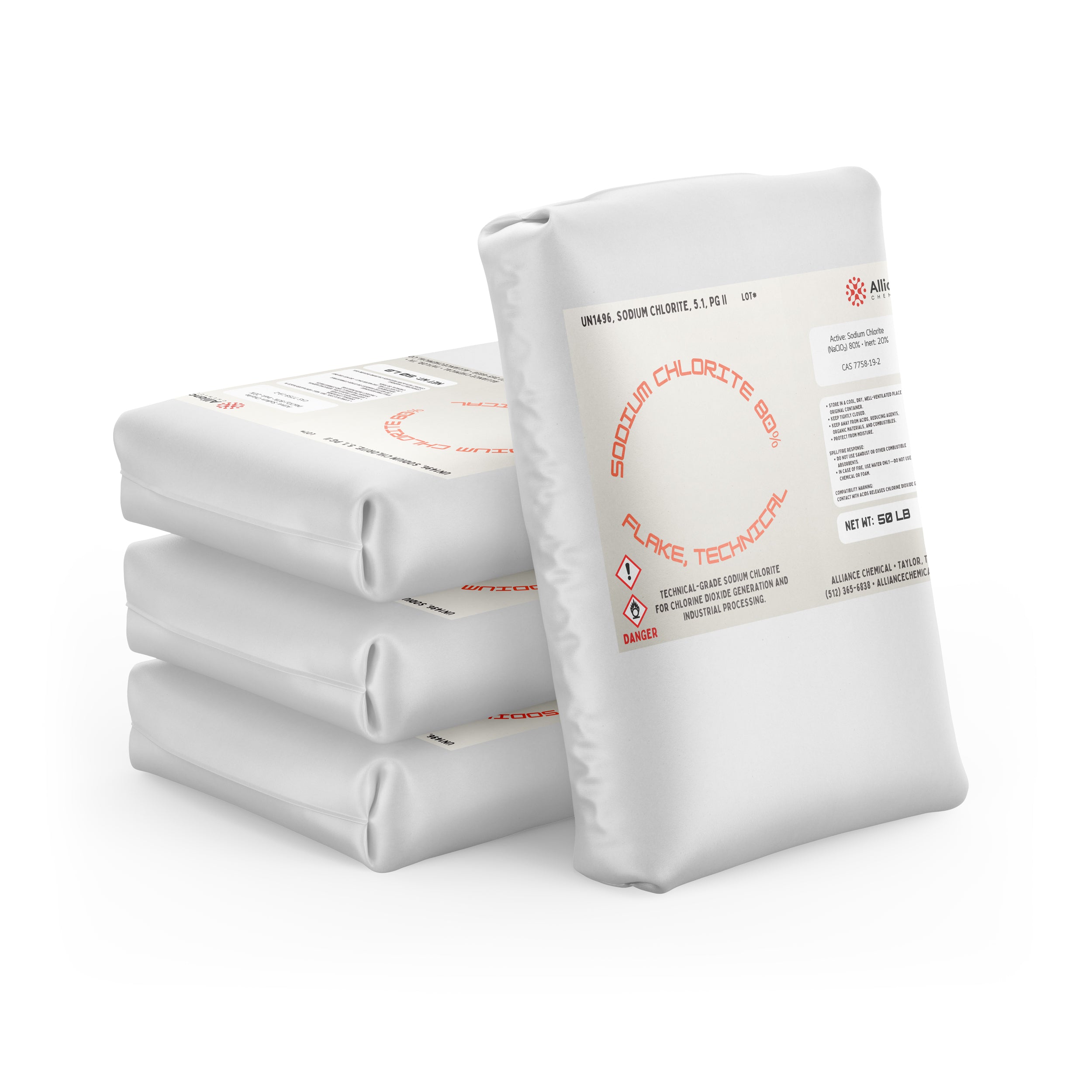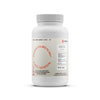Sodium Chlorite Flakes 80% - Technical Grade
Category : Salts
$68.00
Unit price
Quantity
Ask a question
Product Overview
Sodium Chlorite Flakes 80% - Technical Grade is a white crystalline solid and a robust oxidizing agent designed for demanding industrial settings. The product is supplied as flakes with an assay of 79–81% NaClO₂, typically 80%, ensuring reliable oxidizing performance in downstream processes. Its solid form contributes to stable handling and storage in bulk or drum configurations, while its chemistry enables controlled chlorine dioxide generation when acidified, a feature leveraged across water treatment and chemical synthesis workflows. The material is characterized by a practical particle size distribution and moisture content aligned with technical-grade QC targets, supporting reproducible reaction kinetics and process control in plant-scale operations.
In addition to its primary oxidizing role, this technical-grade sodium chlorite is specified with stringent impurity limits to minimize process contaminants in critical applications. The product is suitable for use by trained personnel in industries requiring robust oxidants with clear quality specifications, and it is compatible with standard protective equipment and facility controls used in industrial chemical handling. The combination of high purity, stable solid form, and well-defined specifications helps operators achieve consistent results across batch processing, disinfection-related oxidations, and chemical synthesis steps that rely on controlled chlorine dioxide generation under acidic conditions.
Key Properties
- Product Code: SODIUM_CHLORITE_80_TECHNICAL
- Chemical Formula: NaClO₂
- Molecular Weight: 90.44 g/mol
- Assay (wt %): 79–81% (typical 80%)
- Color (APHA/Hazen): max 8 (typical 5)
- Specific Gravity (20°C): 1.35–1.60 (typical 1.48)
- Residue After Ignition: max 0.2% (typical 0.05%)
- Chloride (ppm): max 1500 (typical 700)
- Nitrate (ppm): max 50 (typical 20)
- Ammonium (ppm): max 5 (typical 1)
- Sulfate (ppm): max 200 (typical 100)
- Phosphate (ppm): max 50 (typical 20)
- Arsenic (ppm): max 0.5 (typical 0.2)
- Heavy Metals – Lead (ppm): max 0.5 (typical 0.2)
- Iron (ppm): max 0.5 (typical 0.2)
- Copper (ppm): max 0.5 (typical 0.2)
- Manganese (ppm): max 0.5 (typical 0.2)
- Nickel (ppm): max 0.5 (typical 0.2)
- Zinc (ppm): max 1 (typical 0.4)
- Aluminum (ppm): max 0.5 (typical 0.2)
- Chromium (ppm): max 0.5 (typical 0.2)
- Cobalt (ppm): max 0.2 (typical 0.1)
- Calcium (ppm): max 1000 (typical 500)
- Magnesium (ppm): max 1000 (typical 500)
- Potassium (ppm): max 1000 (typical 500)
- Sodium (ppm): max 5,000,000 (typical 2,500,000)
Common Applications
- Water Treatment – Oxidizing agent and chlorine dioxide precursor in controlled disinfection and algae control programs for municipal and industrial water systems.
- Chemical Synthesis – Oxidation steps and etching/ bleaching processes in specialty chemical manufacturing requiring a stable solid NaClO₂ source.
- Paper and Pulp Processing – Utilized in oxidation stages and bleaching sequences where precise dosage control is essential.
- Industrial Sanitation – Surface sanitization and equipment cleaning applications that rely on reliable oxidants under regulated process conditions.
- Oxidative Transformations – In synthetic workflows requiring selective oxidation capabilities with downstream acidification to generate ClO₂ in situ.
- Metal or Mineral Processing – Oxidizer for certain leaching or detoxification steps, conducted under controlled pH and temperature regimes.
- Chemical Milling and Surface Treatment – Oxidant-assisted surface modification where compatibility with process streams is required.
- Cleaning-in-Place (CIP) Systems – Support for sanitization cycles in food-contact or Pharma-adjacent environments when formulation is appropriate for downstream approvals.
Safety Precautions
Handle with care in a well-ventilated area, using appropriate PPE including chemical-resistant gloves, splash goggles, and a face shield as needed. Store the material in a cool, dry place away from direct sunlight, in containers made of HDPE or glass to minimize moisture uptake and avoid reactions. Keep the container tightly closed when not in use and ensure separation from acids or strong reducing agents to prevent hazardous reactions. Adequate ventilation and fume management are essential during handling and transfer operations to minimize inhalation risks.
In case of exposure, follow SDS guidance: the signal word is DANGER with Ox. Liq. 1, Skin Corr. 1B, and Eye Dam. 1 classifications. Emergency procedures include rinsing eyes for several minutes, washing skin with soap and water, moving exposed individuals to fresh air, and seeking medical attention for inhalation or ingestion exposure. Transport is UN 1496, Sodium Chlorite, Class 5.1, PG II. Always consult the Safety Data Sheet before use and adhere to storage conditions: away from acids and reducing agents, keep container closed, and avoid elevated temperatures and moisture ingress.
Benefits
✔ High-purity technical-grade oxidant – Consistent assay (79–81%), low impurity levels, and clear QC targets support reliable process control in industrial settings.
✔ Solid, stable form – Flakes offer convenient handling, bulk packaging, and controlled dosing in large-scale operations.
✔ Defined impurity profile – Impurity limits across halides, metals, and anions minimize downstream interference in oxidation steps.
✔ Well-documented test methods – ICP-OES, ICP-MS, Ion Chromatography, and standardized titration methods ensure traceability and compliance with industry norms.
| Property | Value |
|---|---|
| Molecular Weight | 90.44 g/mo g/mol |
| Formula | NaClO₂ |
| Grade | Technical |
| Flash Point | Not applicable |
| Form | Flakes |
| Solubility | Highly soluble; ~545 g/L at 20 °C |
| Appearance | White to slightly yellow crystals/flakes; odorless |
| Melting Point | ~190 °C (decomposes) °C |
| Industry | Laboratory research |
Compare Products
| Price |
|---|
| SKU |
| Rating |
| Discount |
| Vendor |
| Tags |
| Weight |
| Stock |
| Short Description |

